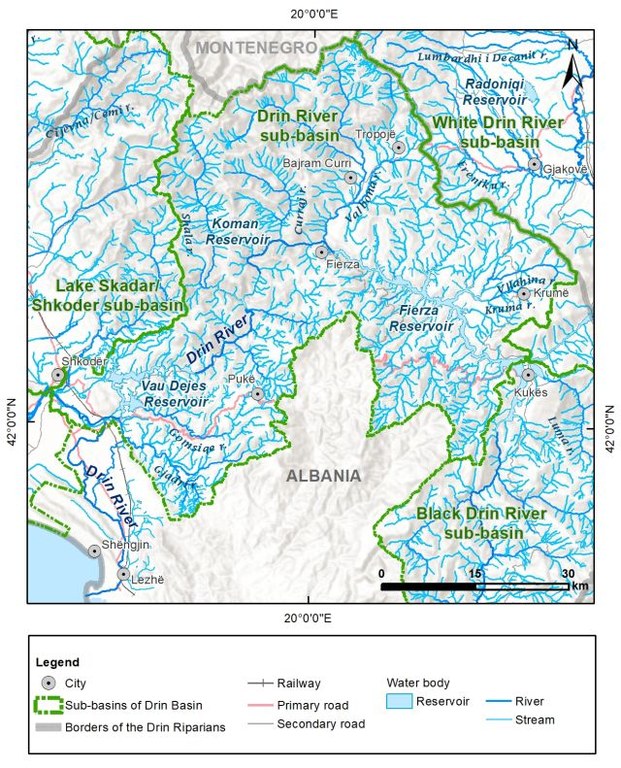Drin River sub-basin
After the floods of 1848-1858 and 1896, the Drin River in Albania was split into two branches: one flowing via its original channel (old Drin) and a new one flowing towards the Buna/Bojana River, which it joins roughly 1.5 km from the outlet of Lake Skadar/Shkodër. At present, the 'old' Drin communicates with the Drin River through groundwater discharges in the Gjader fields and also the Gjader River itself.
There are three major dams and associated reservoirs built on the Drin River. Of these, the Fierza reservoir has by far the largest storage. From October to March, the winter level is not exceeded, though during April, it increases to the maximum operating level. This provides maximum flood protection in winter when most floods occur, when the accumulated run-off from the last month of snow melt in spring maximizing available storage for summer. The total volume of all three reservoirs on the Drin River equals 3.76 x 109 m3, which is greater than the average volume of Lake Skadar/Shkodër.
An analysis carried out for the needs of the Transboundary Diagnostic Analysis -developed in the framework of the GEF Drin project- indicated that the operation of the dams in the Drin cascade is an important factor influencing the flow regime downstream of the Drin River and the Buna/Bojana River, and therefore influences the hydrological conditions in Lake Skadar/Shkodër. The functioning of the three dams alters the natural intra-annual flow distribution downstream of the dams, reducing some of the peak discharges during the wet season and increasing average discharges during the dry season. Because of the volume of its reservoir, the operation of the Fierza dam can -under specific conditions- affect the multiannual discharge distribution and eventual flooding events.






